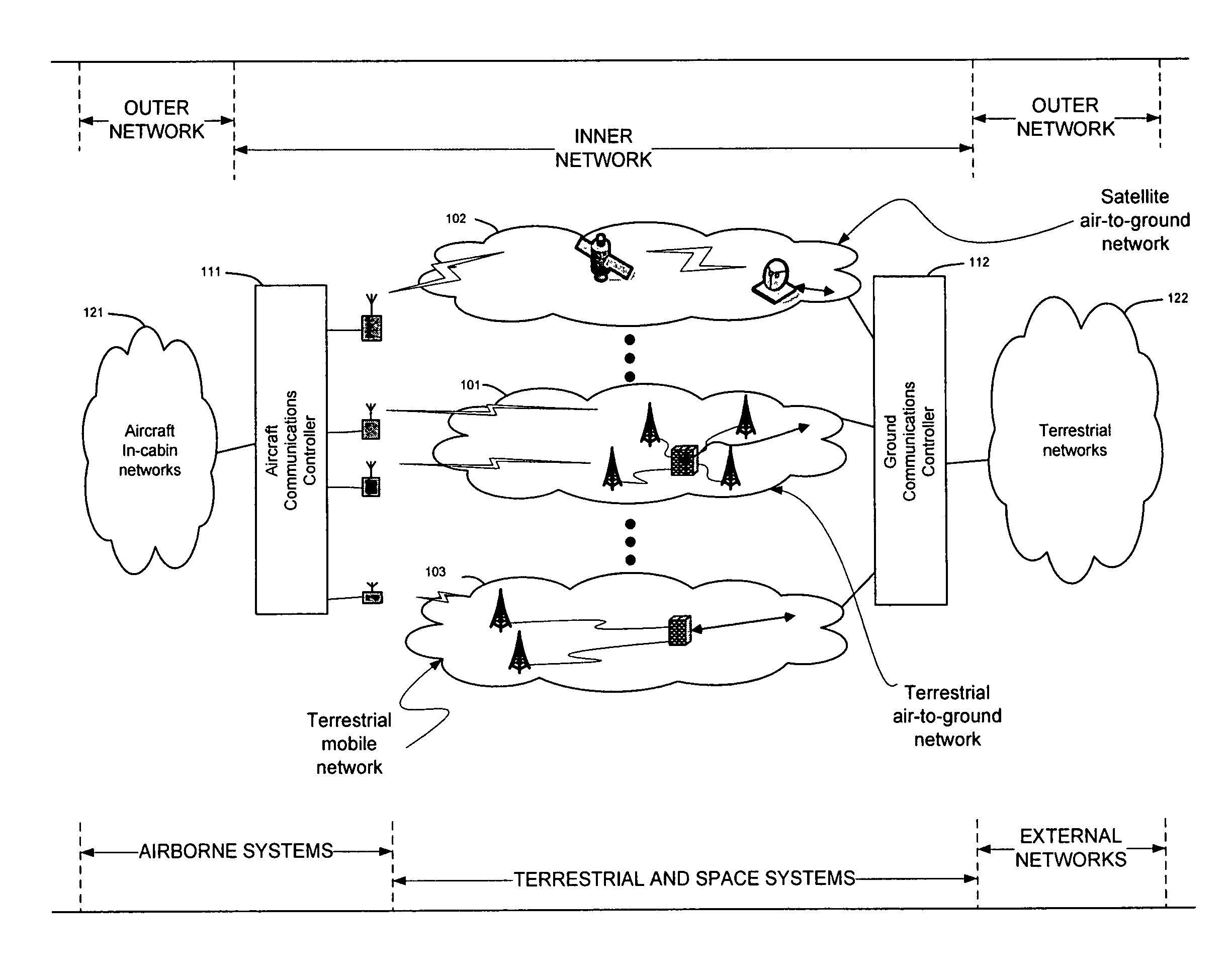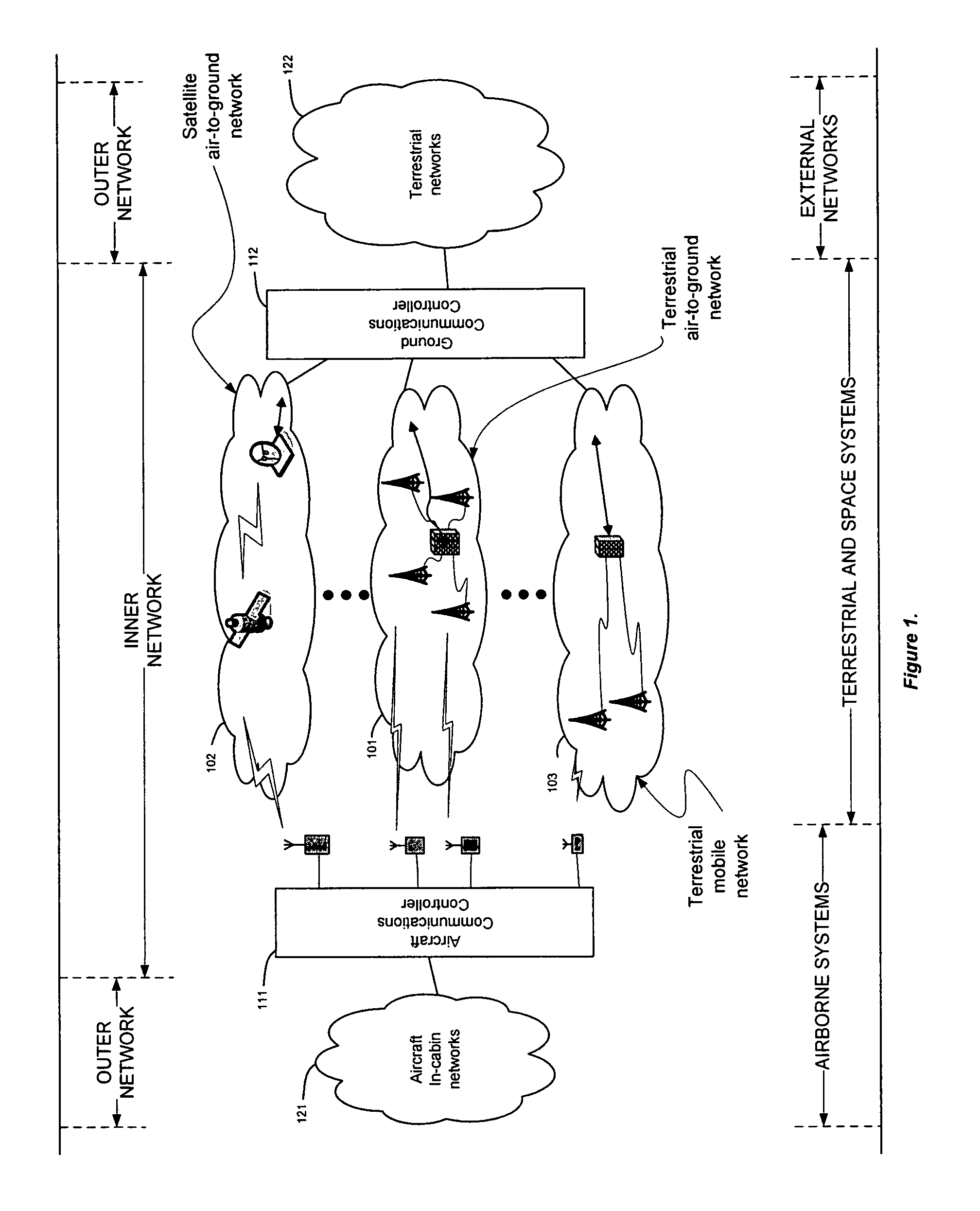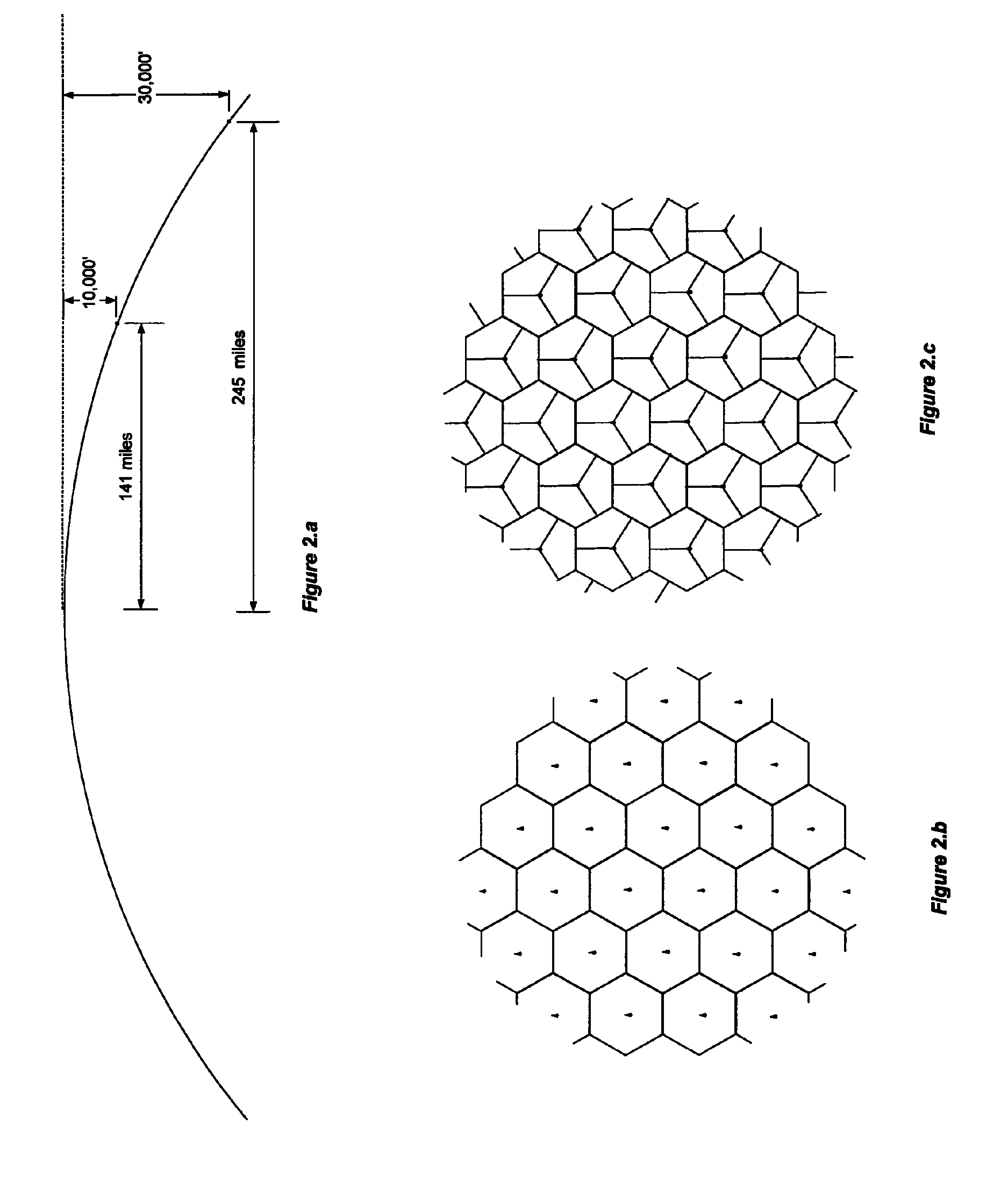System for managing call handoffs between an aircraft and multiple cell sites
a technology for managing call handoffs and aircraft, applied in the field of cellular communications, can solve problems such as inability of networks to provide adequate communications services, and achieve the effect of maximizing the capacity availabl
- Summary
- Abstract
- Description
- Claims
- Application Information
AI Technical Summary
Benefits of technology
Problems solved by technology
Method used
Image
Examples
Embodiment Construction
[0027]Cellular wireless communication systems provide the service of connecting wireless communication customers, each having a wireless subscriber device (or wired subscriber device, such as a connection to a Local Area Network on the aircraft), to both land-based customers who are served by the common carrier public telephone network as well as other wireless communication customers. In such a system, if the traffic is circuit switched, all incoming and outgoing calls are routed through Mobile Telephone Switching Offices (MTSOs), each of which is connected to a plurality of cell sites, which communicate with wireless subscriber devices located in the areas covered by the cell sites.
[0028]The terms “cell site” and “cell” are sometimes loosely used in the literature, and the term “cell site” generally denotes the locus at which the transmitter and receiver apparatus is located, while the term “cell” generally denotes the region of space which is served by a particular transmitter-re...
PUM
 Login to View More
Login to View More Abstract
Description
Claims
Application Information
 Login to View More
Login to View More - R&D
- Intellectual Property
- Life Sciences
- Materials
- Tech Scout
- Unparalleled Data Quality
- Higher Quality Content
- 60% Fewer Hallucinations
Browse by: Latest US Patents, China's latest patents, Technical Efficacy Thesaurus, Application Domain, Technology Topic, Popular Technical Reports.
© 2025 PatSnap. All rights reserved.Legal|Privacy policy|Modern Slavery Act Transparency Statement|Sitemap|About US| Contact US: help@patsnap.com



